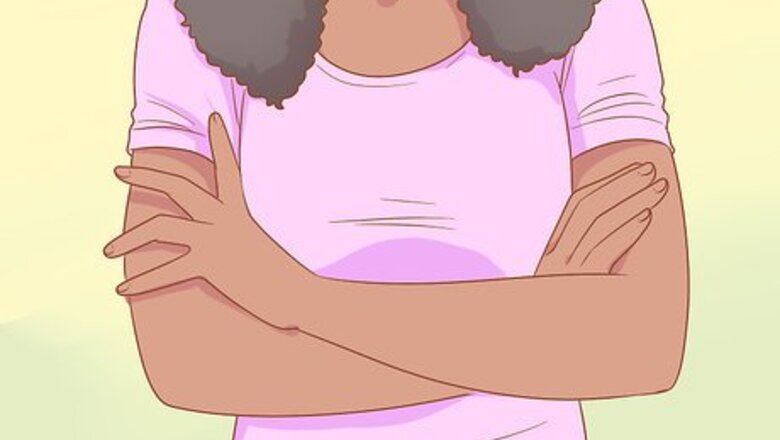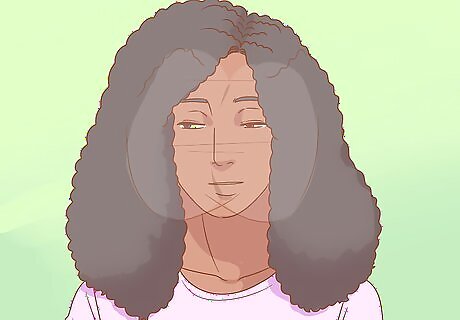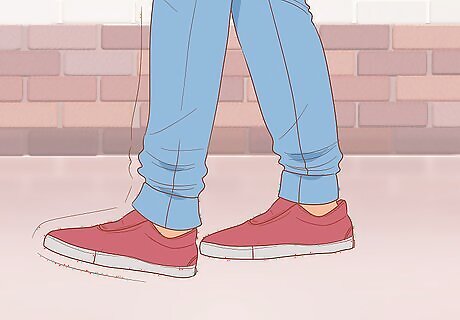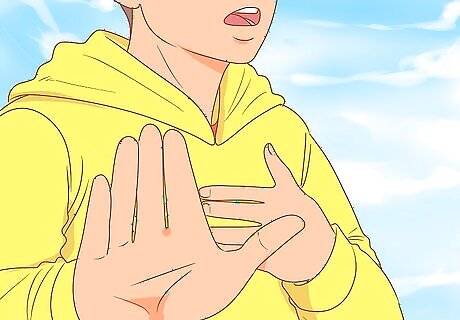
views
Detecting a Liar through Body Language

Observe if someone holds their body with unusual rigidity. Usually during an informal conversation, a person’s body is relaxed. People cross their arms, shift poses, and perform hand gestures. They might also use lots of hand language by showing hands and if they do this, it is more likely that they are lying. However, if the person you’re speaking to seems stiff and keeps their body in one position, it’s possible that they’re lying to you. On the other hand, some people fidget or shift when they’re lying and feel uncomfortable. The different behaviors are likely both due to the person’s “fight or flight” response prompting them to hold their ground (“fight”) or act nervous (“flight”).

Look to see if they move their head into a variety of positions. The basic rule of thumb is that people are uncomfortable when they lie, and that this discomfort may translate into some odd body language. Watch the person’s head and see if it remains in 1 position for at least 10 seconds at a time. If it doesn’t, and if the person moves their head between several different positions, they may be lying. For example, if someone is lying to you, you may note that they cock their head to one side for a few seconds, then tilt it up to look at the ceiling, then jerk their head to one side before leaning it down towards the ground.

See if someone covers their mouth while they’re speaking to you. In most conversations, people only cover their mouth when they cough or sneeze. If you’re speaking to someone and notice that they hold a hand over their mouth as they’re speaking, there’s a good chance that what they’re saying is a lie, especially if they repeat the behavior more than once. This behavior is an intrinsic response to a person’s reluctance to lie. Think of it like this: they’re covering their mouth to shut off communication and avoid telling the entire truth.

Watch the speaker’s feet to see if they shuffle or shift them. This is a great sign of dishonesty. If a person is lying to you, they’re less likely to stand with their feet firmly planted. That’s not to say that an honest person never moves their feet while speaking. But if you notice that somebody seems to be shifting the position of their feet every few seconds, you’ll have reason to suspect that they’re lying. If you’re walking with someone who you suspect of being dishonest, stop and stand still while you’re talking. This will force them to do the same and allow you to watch their feet.

Note whether someone becomes aggressive and starts to point. If a liar feels as though their dishonesty is being found out when you question their story, they may double down on their defenses. To do this, the person may make aggressive hand gestures and point their finger at you accusatively. So, if you question the truth of someone’s story and they loudly defend their innocence while pointing a finger in your face, they’re likely lying. If the person you’re speaking to becomes agitated, starts to shout, or seems to be considering physical violence, it’s best to break off the conversation.

Keep in mind that everyone's body language is different and that situations can impact body language. Culture, disability, and personal quirks can affect people's body language. Get to know the person's baseline before making rushed judgments about their honesty. Also keep an eye out for situations that may be affecting them. Culture: Eye contact is disrespectful in some Eastern cultures. Thus, people may avoid it in ordinary conversation. Disability: People with certain disabilities, such as autism and ADHD, may fidget and avoid eye contact in normal conversations. Autistics may stare into space when paying attention to you. This may come across as dishonesty or inattention, when they're actually just doing what makes them comfortable. Discomfort: Cold weather, light that's too bright, something caught in the eye, uncomfortable clothing, and other situations may affect someone's body language at the moment as they try to get comfortable.
Paying Attention to Breathing and Speech

Note their breathing and see if they’re breathing abnormally heavily. The stress and tension that come with lying in a conversation can build up and cause the liar to lose their breath. If you suspect someone of being dishonest, see if you can tell how fast they’re breathing. If you can’t hear their breath, take a look at their upper chest: you may notice it rising and falling at a suspiciously fast pace. The liar may not be physically gasping for breath. But, for example, you may notice that they pause to catch their breath 2-3 times during a short conversation.

Pay attention to whether or not the liar includes themself in a narrative. When an individual is telling a lie, they often remove themself from the narrative in order to make it sound as if they weren’t involved with the incident they’re lying about. The individual may also bring up other people more often than they discuss themself. For example, say you’re talking to a student who cheated on an exam. Instead of saying, “I was worried that I’d lose my scholarship if I failed the test,” they may say, “My parents said I had to pass the test, and my friend Mike told me my scholarship could be at risk if I didn’t.”

Listen to hear if they say certain words or phrases multiple times. Repeated words are a helpful indication that someone isn’t telling you the truth. If a person feels uncomfortable while they’re spinning a lie, they may stumble over wording and end up repeating themself. Alternately, they may unconsciously repeat a certain phrase that seems to clear them of guilt. For example, say that your neighbor rear-ended your parked car but doesn’t want to admit it. When confronted, they may say, “Like I told you before, I didn’t get home until noon today, which was after somebody hit your car, like I already told you.”

See if they provide an excessive amount of explanatory information. When people feel nervous about lying, they often try too hard to make their made-up story believable and talk a lot more. If you’re speaking with someone and you notice that they fill the conversation with much more explanation that is needed, they may be lying. For example, say that some teenagers’ baseball shattered your window. When you confront them, a lying teen would say, “No, I swear, our ball sailed clear over your house, I’d say by at least 10 feet—in fact, I bet it’s in your backyard right now, I think I heard it hit your roof also!” In the same situation, an honest teen would simply say, “No, my baseball didn’t go near your window.”

Watch for signs of a dry mouth as a person speaks to you. As a person lies, their body will experience symptoms of stress. One of these symptoms is a dry mouth. The longer you spend speaking with someone who is lying to you, the dryer their mouth will become. Signs of a dry mouth include: A slower rate of speech Speech that’s harder to understand Drinking large amounts of water
Studying Eye and Face Movements

Note if someone maintains unbroken eye contact. When 2 people speak to one another, it’s normal to hold eye contact for 5–10 seconds and then to look away for several seconds before resuming eye contact. If someone holds your gaze without looking away—and especially if they hold it without blinking—you may have reason to suspect that they’re lying. Since a liar’s story will be untrue, they’ll take extra steps to convince you that they’re telling the truth. Holding eye contact for a strangely long time is 1 way a liar will attempt to prove their veracity.

Watch a person’s face for quick twitches called microexpressions. A “microexpression” is a psychological term used to describe an involuntary facial reflex that a person makes when they’re being dishonest. These microexpressions may only last for less than a fifth of a second, so watch the liar’s face closely. The person may make 1 microexpression over and over, or may make a variety. For example, if someone is telling you a partially dishonest narrative, you may notice that their eyes twitch every 5-10 seconds or that they lick their lips whenever they repeat a dishonest detail.

Observe if someone blinks more or less than usual. For this step, you’ll need to have an idea of how much someone blinks during a conversation in which they’re telling the truth. If you’re speaking to them about an issue that you suspect they’re lying about, watch their blinking. In most cases, a liar with either blink much more or much less than normal. For example, say that you’re speaking with your neighbor about the weather, and note that they blink about 1 time every 10 seconds. If you shift the topic of conversation to the large dent in the rear of your car and the start blinking every 2 seconds, you have reason to suspect that they’re lying.




















Comments
0 comment